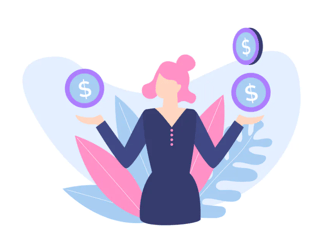Understanding the Psychology of Pricing in Your Optical Shop
How you price products in your optical shop is an important part of your overall practice strategy, and directly affects your profits. How are you currently determining your prices? Are you consistently reviewing and analyzing different strategies against each other so that you know what works best?
Understanding the psychology behind why consumers make purchases based on price could help you determine the prices you're setting on your products. We found 3 good examples of pricing studies from Neil Patel and Inc.com that we think can really help you strategize your shop's pricing.
3 Studies on Price that Your Optical Shop Should Read
 Time over Money
Time over Money
When it comes to frames and contacts, those are both products that your patients spend a lot of time with. So let's take a look at a study that shows the value of selling time over money.
A study done by Jennifer Aaker, General Atlantic Professor of Marketing at Stanford Graduate School of Business, set up a lemonade stand with two 6 year old sellers. The lemonade could be purchased anywhere between $1 - $3, and three separate signs were used to advertise:
- "Spend a little time and enjoy C&D's lemonade"
- "Spend a little money and enjoy C&D's lemonade"
- "Enjoy C&D's lemonade"
The sign stressing time attracted twice as many people, who were willing to pay twice as much.
In a second example, a study was performed with college students and iPods. Two questions were asked:
- "How much time have you spend on your iPod?"
- "How much money have you spent on your iPod?"
Students asked about time showed far more favorable opinions of their iPods than those asked about money.
The Number 9
Using the number 9 on a price tag isn't a new strategy, in fact it's very common. Let's look at an example that proves the reasoning behind this tactic.
In an experiment by MIT and the University of Chicago, a standard women's clothing item was tested at prices of $34, $39, and $44. Researchers found that the $39 price sold the best, beating out the cheaper price of $34. Given similar circumstances, and even a less expensive option, it seems that the number 9 still comes out on top.
Charm Pricing
The example above on using the number 9 is one example of charm pricing, but there are other prices that can work to charm consumers as well.
In another example, Wadhwa and Zhang found that round prices, because they are processed more fluently, work better for emotional purchases. When consumers can process a price quickly, the "price just feels right."
Another charm tactic? Choose prices that take fewer syllables to say. Nick Kolenda, psychology obsessed marketer, says, "Our brain uses more resources to process phonetically longer prices (which triggers fluency effect). Since we use larger amounts of mental resources, we falsely infer that those prices must me larger.".
On top of just pricing strategies are you looking for ways to boost profits in your dispensary? Download our ebook.
Originally published in March 2016

